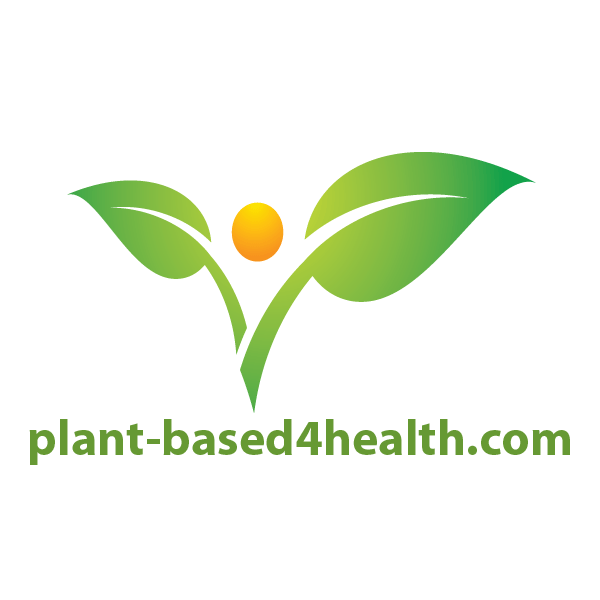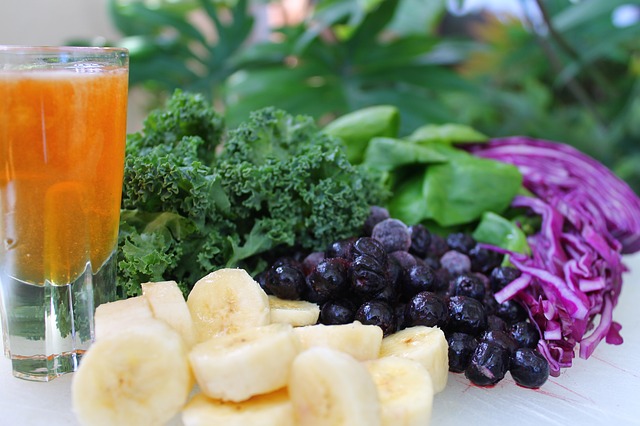
by plant4health | May 21, 2015 | cancer, grocery shopping, Nutrition, Plant-based, Recipes, Vegan, WFPB, Whole food, Whole food, plant-based
 Last week, I was talking with a friend who desperately wants to change her diet but can’t seem to take that first step. According to her doctor, if she doesn’t start making some changes soon, she will be destined for heart disease, stroke, chronic arthritis and/or diabetes as she moves towards her 60s. Over the last few years, she’s gained a few pounds, begun experiencing chronic joint pain, and is battling fatigue as she tries to maintain the high energy her busy lifestyle demands. She went to the doctor thinking her symptoms were signaling the beginning of menopause that hormone therapy might ease, only to learn that she is in the “high risk” category for the most popular illnesses that lead to death and disability in the United States.
Last week, I was talking with a friend who desperately wants to change her diet but can’t seem to take that first step. According to her doctor, if she doesn’t start making some changes soon, she will be destined for heart disease, stroke, chronic arthritis and/or diabetes as she moves towards her 60s. Over the last few years, she’s gained a few pounds, begun experiencing chronic joint pain, and is battling fatigue as she tries to maintain the high energy her busy lifestyle demands. She went to the doctor thinking her symptoms were signaling the beginning of menopause that hormone therapy might ease, only to learn that she is in the “high risk” category for the most popular illnesses that lead to death and disability in the United States.
My friend is not obese nor is she a junk food addict. Actually, before this wake up call, she thought she was living a pretty healthy lifestyle; she always eats a salad with meals, orders whole grains and organic meat when dining out, avoids all fast-foods, and always declines the pastries and sweets offered at business meetings and parties. However, the hidden fats, carbs, salt and sugar from the foods she has been eating, combined with her limited amount of exercise was starting to take its toll.
(more…)
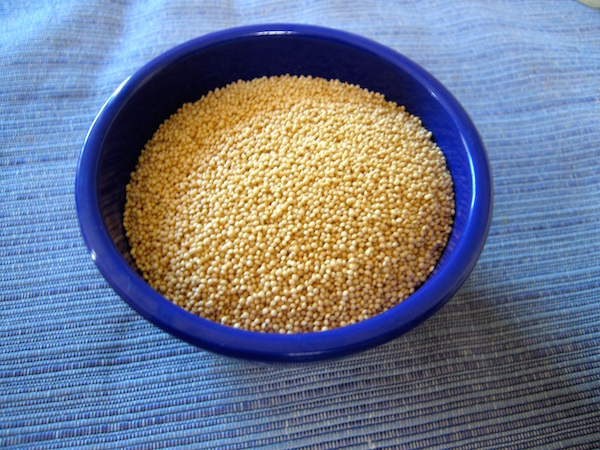
by plant4health | May 14, 2015 | cancer, Nutrition, Plant-based, Recipes, Vegan, WFPB, Whole food
 Recently, I’ve been experimenting with amaranth, both the seed and flour, in my cooking. I enjoy incorporating new textures and flavors into our meals. Amaranth provides a subtly sweet, earthy nuttiness, making it delicious in both sweet and savory dishes. Depending on how you cook it, from crispy chewy crackers to breakfast porridge, amaranth is a wonderful addition to your healing diet.
Recently, I’ve been experimenting with amaranth, both the seed and flour, in my cooking. I enjoy incorporating new textures and flavors into our meals. Amaranth provides a subtly sweet, earthy nuttiness, making it delicious in both sweet and savory dishes. Depending on how you cook it, from crispy chewy crackers to breakfast porridge, amaranth is a wonderful addition to your healing diet.
Amaranth, a major part in the Aztecs’ diet, has been around for thousands of years. It is naturally gluten-free and holds a powerhouse of nutrients. It contains more than three times the average amount of calcium found in grains and is high in protein, iron, magnesium, phosphorus, and potassium (1). Amaranth is also alkaline, making it a wonderful grain for those on an alkaline healing diet.
(more…)

by plant4health | Apr 30, 2015 | Nutrition, Plant-based, Vegan, Whole food, Whole food, plant-based
 Recently, my husband’s brother experienced a mountain bike accident resulting in a traumatic brain injury. Through the countless hours and weeks my husband and I have spent sitting vigil with his wife, other family members and friends, we have watched doctors and nurses work tirelessly at helping heal his serious physical injuries. However, these medical professionals continue to neglect one crucial element – nutrition.
Recently, my husband’s brother experienced a mountain bike accident resulting in a traumatic brain injury. Through the countless hours and weeks my husband and I have spent sitting vigil with his wife, other family members and friends, we have watched doctors and nurses work tirelessly at helping heal his serious physical injuries. However, these medical professionals continue to neglect one crucial element – nutrition.
I took some time to look around at the food they were feeding their wards, these critically injured and sick individuals, and noticed with despair the plates lined with processed meat sandwiches on white bread, sugary canned fruit cocktail and jello, prepackaged nutrient void applesauce, white rice, instant potatoes, and broth made from salty bullion. All these foods provide calories, but little else.
When the body is in healing mode it needs powerhouse nutrients. I can’t help but wonder how the hospitals would improve healing rates by simply feeding their patients fresh whole plant-based foods that support each patient’s specific physiological needs. (more…)
by plant4health | Apr 22, 2015 | Plant-based, Sustainability, Vegan, WFPB
In honor of Earth Day, I’d like to share a short video I created on the impact of our food choices on people, animals and the planet. Adopting a whole food plant-based (WFPB) diet, promoting organic farming practices, and eliminating subsidies to farmers and fisheries can go a long way to help the health of humans, animals and our planet.
[wpvideo lXDgSfQz]
Transcript:
Our planet has over 7 billion people and the population is growing at 14% per year. We have 50% more people today than in 1980. 60% of humans are malnourished. Resources are stretched to the limit. How can we feed our growing population in a sustainable way?
99.7% of our food comes from land but our crop land is decreasing due to population growth, soil erosion and salinization. We could have 30% less irrigated crop land worldwide by 2025. Conventional farming practices use pesticides and herbicides which reduce the nutrient value of soil and create dead zones in our oceans where nothing can live. Organic farming is the best choice. It uses cover crops for natural fertilizer and builds nutrient-rich soil that stores water.
It takes far more water to raise animals for human consumption than to grow plant food for human consumption. A 1 lb. loaf of bread requires 250 gallons of water to produce, whereas 1 lb. of beef takes 5,000 gallons of water. You would save more water just by replacing a pound of beef with plant foods than you would by not showering for six months! It takes less water to produce one year’s worth of food for a completely plant-based diet than it does to produce one month’s worth of food for a diet with animal products.
As mentioned earlier, nitrogen fertilizers used on conventionally-grown crops run off into our coastal oceans, creating dead zones where nothing can live. In addition, many fish we eat are full of heavy metals like mercury. Over fishing is taking its toll. 75% of fisheries are in peril and there has been a 90% decline in prized fish like tuna and swordfish. We’ve maxed out the ocean and can only bring in 85 million metric tons of fish annually. Farmed fish is not the answer. It also creates dead zones from nitrogen fish food and the cramped conditions encourage disease.
The US government has been giving subsidies to farmers and fisheries for decades. Farmers paid by the government are forced to grow a single crop, such as corn. They get rid of their livestock and no longer have onsite fertilizer. They buy commercial fertilizer which damages our soil and oceans. Subsidies to cattle ranchers to produce cheap meat – increasing meat consumption and therefore water consumption. Subsidies to fisheries result in over fishing. According to the World Trade Organization, US subsidies violate trade practices.
With a growing population of over 7 billion people, we are running out of land to grow food, running out of fresh water in many areas, ruining our coastal oceans and over fishing with some species near extinction. The status quo is unsustainable.
Here are 2 things you can do to help change the status quo.
- Take action! Recognize that we all own our planet: land, water, oceans and air. Encourage your government officials to ban subsidies to farmers and fisheries.
- Eat an organic, 100% plant-based diet. It’s healthier for you, healthier for our land, healthier for our water and marine life and certainly better for the animals who are not killed for consumption by humans.
Sources:
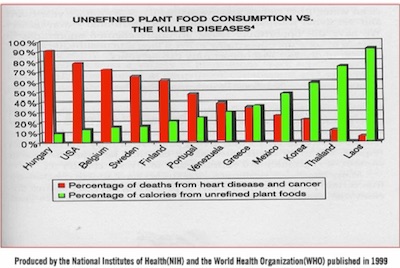
by plant4health | Apr 16, 2015 | cancer, Nutrition, Plant-based, Vegan, WFPB, Whole food, plant-based
Animal products (meat and dairy) promote cancer growth; plant foods prevent and can even reverse it. Regardless of your family history of cancer or other risk factors, you can significantly reduce the chance you will get it by adopting a 100% whole food, plant-based (WFPB) diet.
What is cancer?
Cancer, in which cells in your body mutate, divide and spread, goes through three stages: initiation, promotion and progression. Initiation happens when chemicals capable of causing cancer, called carcinogens, are processed by the liver, turning them from fat soluble to water soluble where they can be excreted from the body. But sometimes these chemicals escape the process and because they are highly reactive, damage molecules like DNA, RNA and protein. If the damaged DNA is not repaired by the body’s immune system, it is permanently changed, causing a mutation. Promotion is when clones of these mutated cells replicate and cluster together over the years. In the progression stage, these clusters, or pre-cancer cells, grow and become tumors. If the tumors invade other tissue or parts of the body, then the cancer has metastasized.
What causes cancer?
In addition to chemicals, there are many factors that can lead to cancer’s development at any of the 3 stages. These include certain viruses, excessive radiation (including from sunlight), nutritional imbalances, obesity, cigarette smoking, alcohol consumption, lack of physical exercise and stress.
Your genes (family history) are often implicated as a risk factor of cancer. However, according to a report published on the National Institutes of Health website, only 5-10% of cancer cases are due to family history, meaning that you are born with mutated genes. But many people suspect that it’s not your genes but how you were raised, the food you ate, the environment you grew up in, etc. that lead to certain cancers running in families. So the good news is that most cancer cases are due to environmental and lifestyle factors – things you can control.
We all have cancer cells that are initiated due to carcinogens, viruses, and lifestyle factors, but a strong immune system supported by proper nutrition can help control whether that cancer develops. Dr. T. Colin Campbell, co-author of The China Study and Whole, has stated that “nutritional imbalances are the most significant causes of cancer” and “…if we have genes that give rise to cancer, we can use nutrition to control the expression of these genes.”
The research:
Lab research conducted by Dr. Campbell showed that high doses of the animal protein casein, which is the primary protein in cow’s milk, promotes chemically induced liver cancer. Rats given a diet of 20% casein had their tumors grow, but when it was lowered to 5%, the tumors shrank. This finding is consistent with earlier research conducted by Indian scientists Madhavan TV, and Gopalan C. in “The effect of dietary protein on carcinogenesis of aflatoxin.” So it turns out that cow’s milk is a carcinogen for humans!
Other findings and experts back up these studies:
What can you do to reduce your cancer risk?
- Adopt a 100% WFPB diet
- Be physically active at least 30 minutes per day
- Maintain a healthy body weight
- Limit supplements, with the exception of Vitamin B12 for those on a 100% WFPB diet, or as recommended by your doctor
- Limit sugary foods and drinks and salty, processed foods
- Limit or avoid alcohol
Although there are no studies proving this, there are theories that “diet-induced acidosis may influence molecular activities at the cellular level that promote carcinogenesis or tumor progression.” See our articles on how to balance your pH.
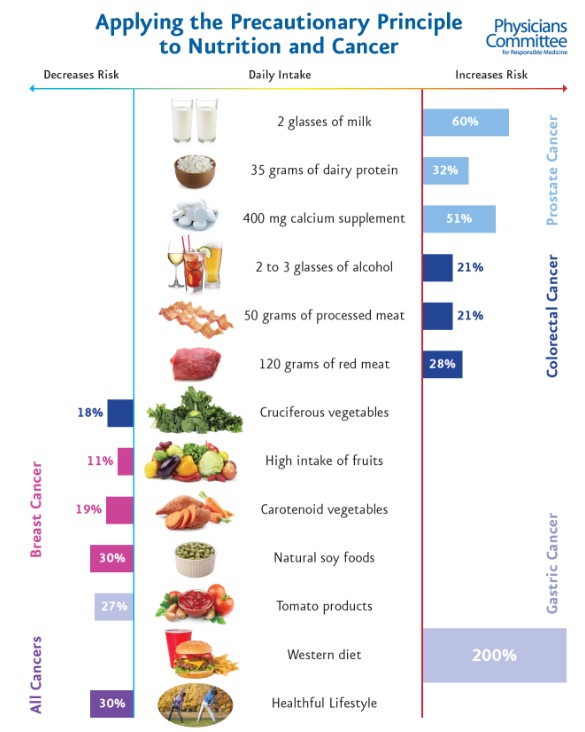 Here’s a link to a great chart published by PCRM about the benefits and risks of certain lifestyle choices and cancer.
Here’s a link to a great chart published by PCRM about the benefits and risks of certain lifestyle choices and cancer.
In summary, regardless of your family history of cancer or other risk factors, you can significantly reduce the chance you will get it by adopting a WFPB diet. You have the power to heal from within!
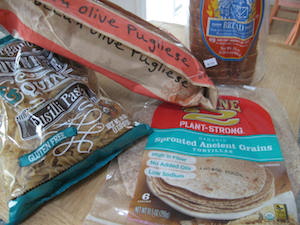
by plant4health | Mar 31, 2015 | Nutrition, Plant-based, Recipes, Vegan, WFPB, Whole food

Gluten-free has become a trendy buzzword among the health conscious. But is it right for everyone, even if you aren’t experiencing symptoms of having a gluten sensitivity?
What is gluten?
Gluten is a protein that naturally exists in wheat, rye, and barley and can be found in a variety of processed foods, including salad dressings and seasoning mixes. Gluten is also hiding in some vitamins, medications and makeup products. Gluten’s main claim to fame is its ability to help foods maintain its shape. That’s why it’s an essential part of baking. When combined with water, gluten’s strong, sticky protein gives structure to baked goods and pastas.
Gluten has become a popular meat substitute for vegans and vegetarians. High in protein, a four-ounce serving of seitan (a processed gluten meat substitute) contains about 26 grams of protein. Gluten is also low in fat and high in iron.(1)
When is gluten bad?
Gluten is harmful to people with celiac disease or a gluten sensitivity. When people with celiac disease (an autoimmune disorder) eat gluten it triggers an allergic reaction that results in inflammation and destruction to the lining of their small intestine and the malabsorption of nutrients. People with celiac disease tend to experience varying degrees of gastrointestinal issues, joint pain and skin rashes. In addition, studies have shown a link between celiac disease and neurological symptoms such as anxiety, depression, autism, epilepsy, and schizophrenia.(2) And there is strong evidence that individuals with autism, epilepsy, and schizophrenia all respond well to a gluten-free diet.(3) It only takes a very small amount of gluten (about 50 milligrams) to cause intestinal damage for a person with celiac disease. Learn more.
A related condition called gluten sensitivity or non-celiac gluten sensitivity can cause symptoms similar to celiac disease with an increase in the non-GI symptoms such as headaches, joint pain and numbness in the limbs and fingers. Individuals with gluten sensitivity lack the same antibodies as those with celiac disease and do not experience the same intestinal damage. Where celiac disease is considered an autoimmune disease, gluten sensitivity is an innate immune response where the immune system’s response does not target your own body’s tissues. (more…)

 Last week, I was talking with a friend who desperately wants to change her diet but can’t seem to take that first step. According to her doctor, if she doesn’t start making some changes soon, she will be destined for heart disease, stroke, chronic arthritis and/or diabetes as she moves towards her 60s. Over the last few years, she’s gained a few pounds, begun experiencing chronic joint pain, and is battling fatigue as she tries to maintain the high energy her busy lifestyle demands. She went to the doctor thinking her symptoms were signaling the beginning of menopause that hormone therapy might ease, only to learn that she is in the “high risk” category for the most popular illnesses that lead to death and disability in the United States.
Last week, I was talking with a friend who desperately wants to change her diet but can’t seem to take that first step. According to her doctor, if she doesn’t start making some changes soon, she will be destined for heart disease, stroke, chronic arthritis and/or diabetes as she moves towards her 60s. Over the last few years, she’s gained a few pounds, begun experiencing chronic joint pain, and is battling fatigue as she tries to maintain the high energy her busy lifestyle demands. She went to the doctor thinking her symptoms were signaling the beginning of menopause that hormone therapy might ease, only to learn that she is in the “high risk” category for the most popular illnesses that lead to death and disability in the United States.